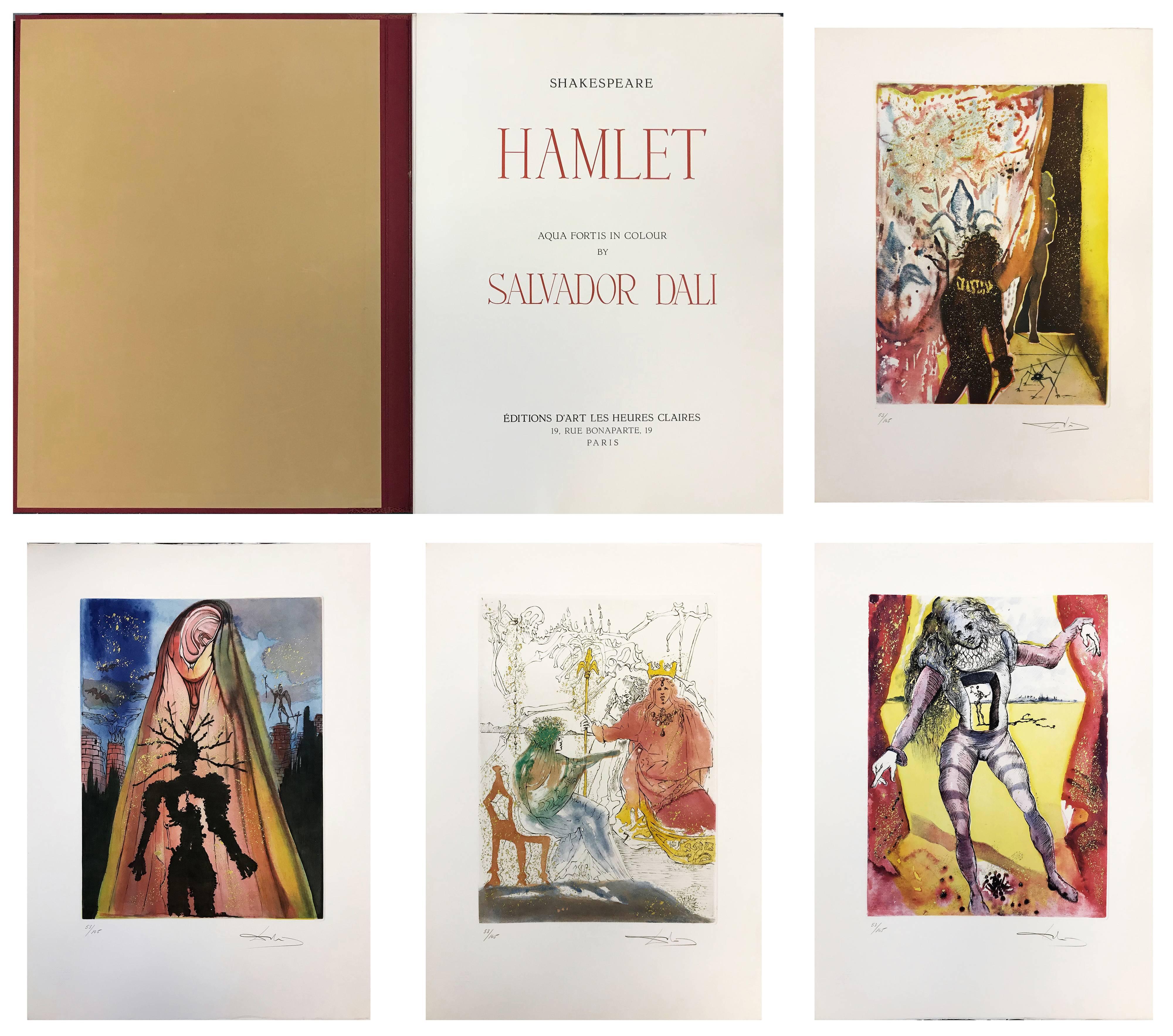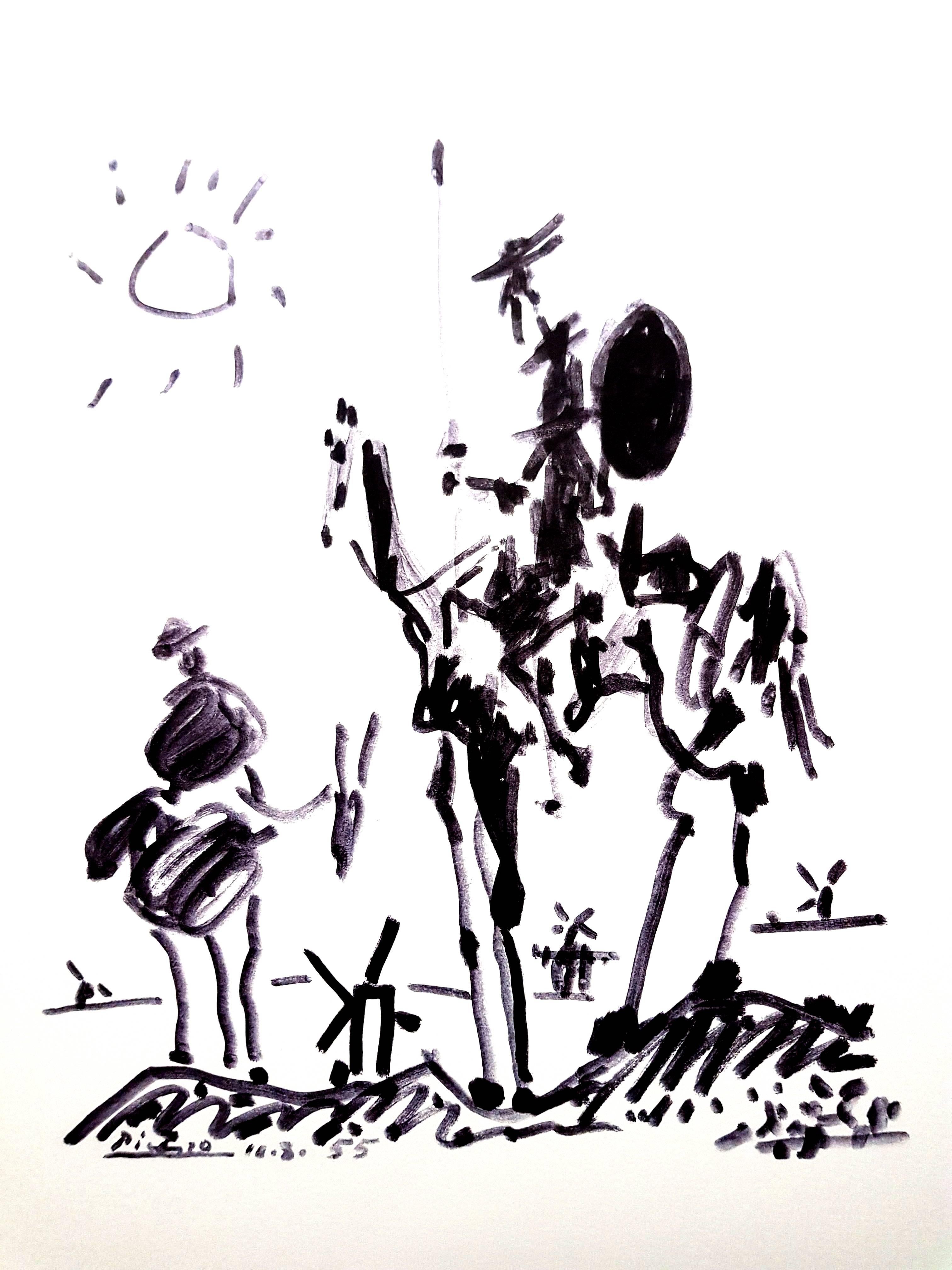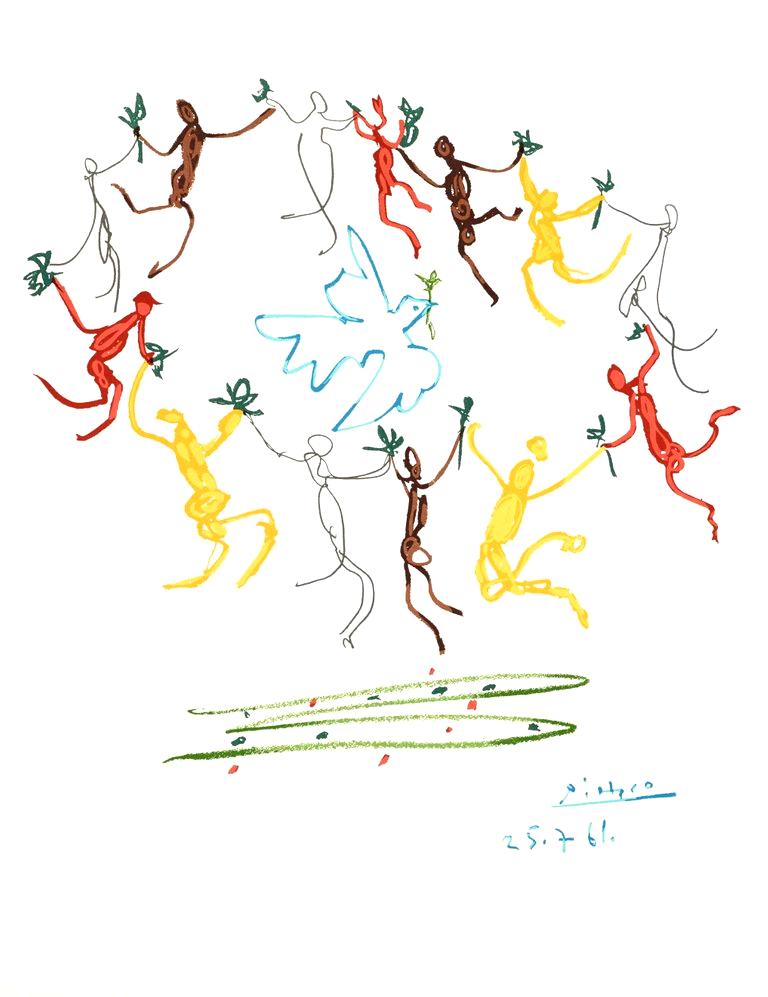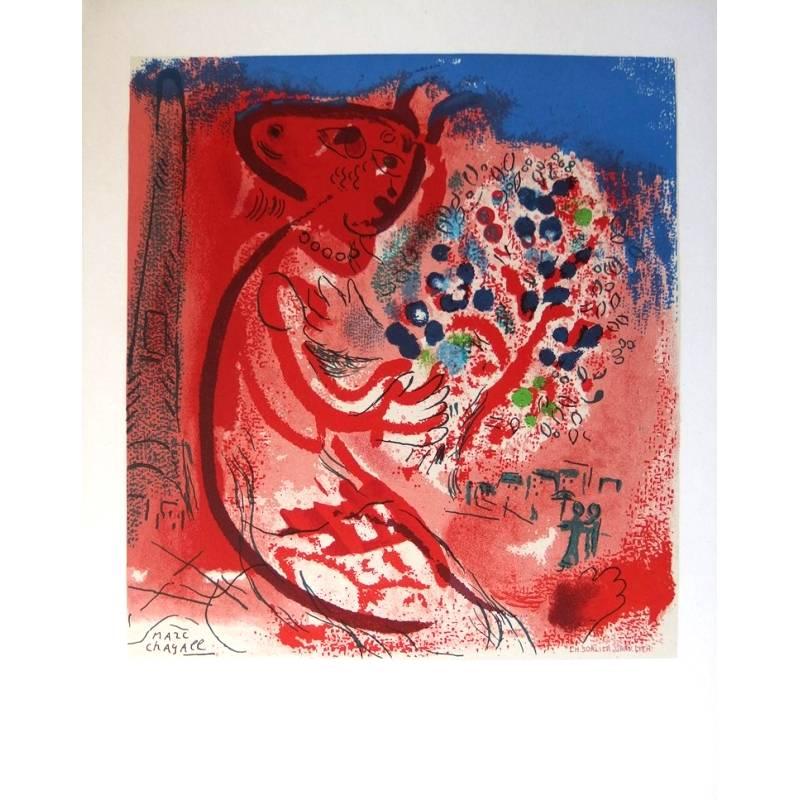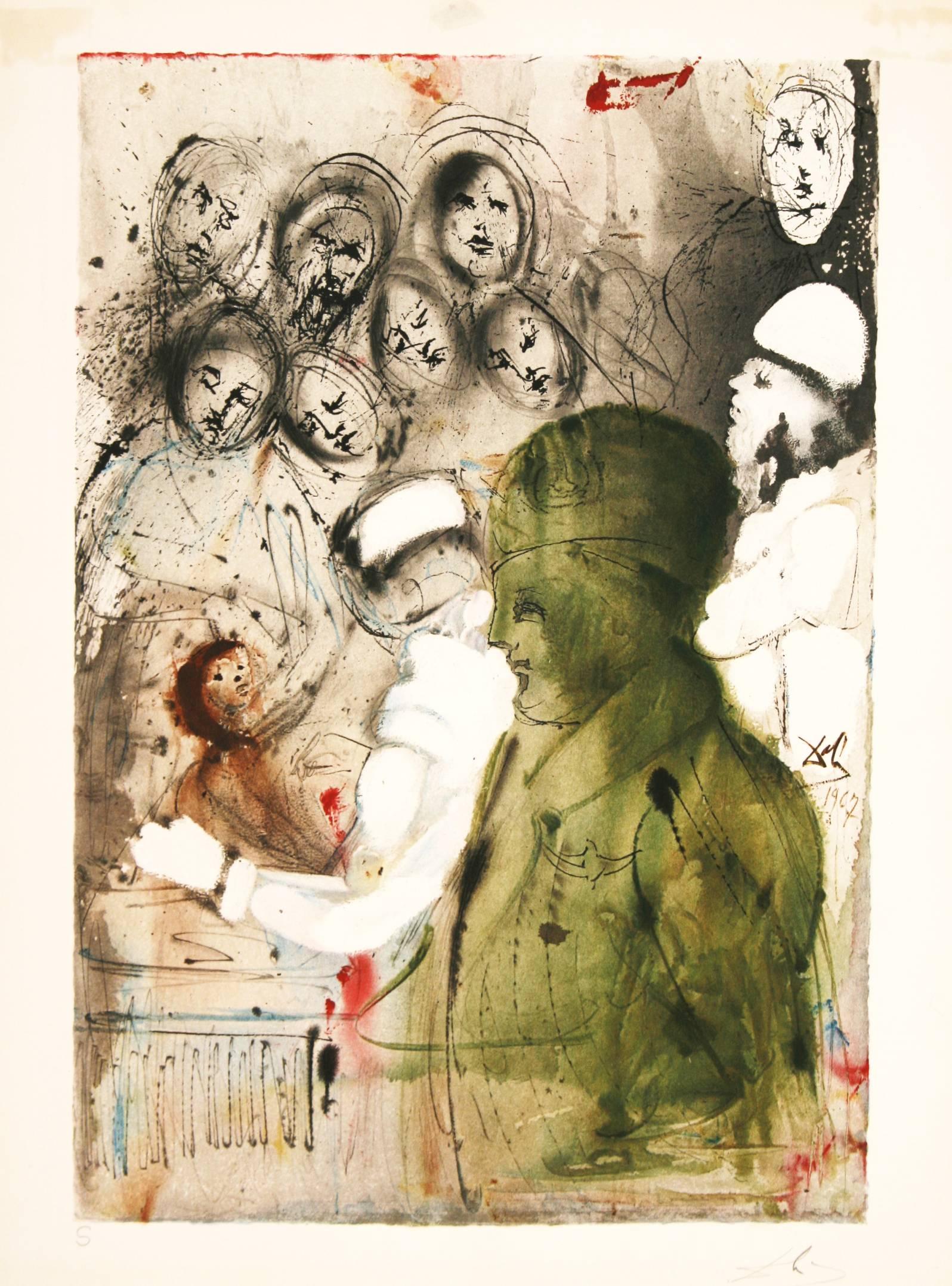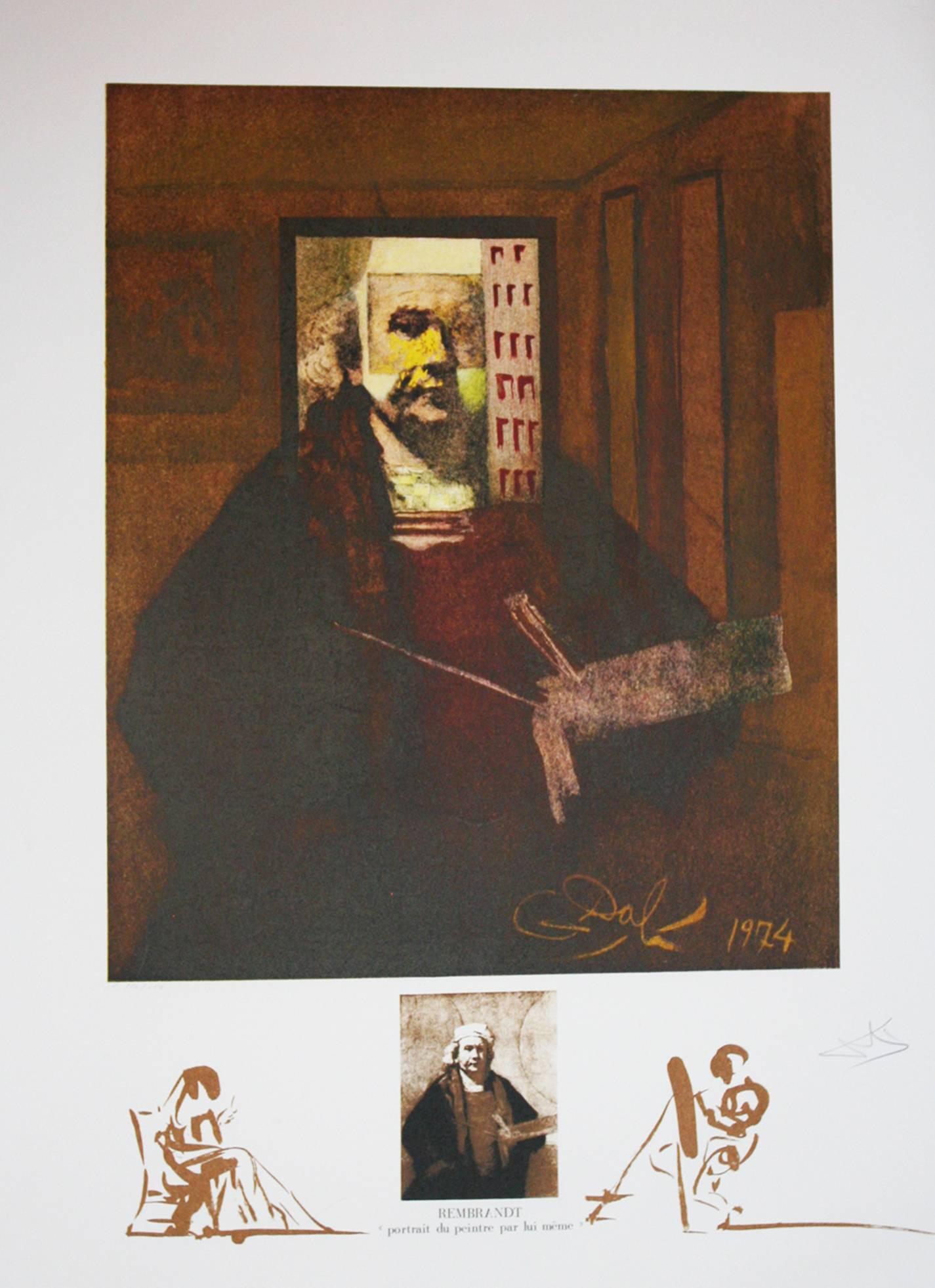Marc Chagall"Cover of "Chagall Lithographe IV, " (M 729), " an Original Lithograph by Chagall1974
1974
About the Item
- Creator:Marc Chagall (1887 - 1985, French)
- Creation Year:1974
- Dimensions:Height: 24.5 in (62.23 cm)Width: 32.5 in (82.55 cm)
- Medium:
- Movement & Style:
- Period:
- Condition:
- Gallery Location:Milwaukee, WI
- Reference Number:
Marc Chagall
Described by art critic Robert Hughes as "the quintessential Jewish artist of the twentieth century," the Russian-French modernist Marc Chagall worked in nearly every artistic medium. Influenced by Symbolism, Fauvism, Cubism and Surrealism, he developed his own distinctive style, combining avant-garde techniques and motifs with elements drawn from Eastern European Jewish folk art.
Born Moishe Segal in 1887, in Belarus (then part of the Russian empire), Chagall is often celebrated for his figurative paintings, but he also produced stained-glass windows for the cathedrals of Reims and Metz, in France; for the United Nations, in New York; and for the Hadassah Hospital in Jerusalem, as well as book illustrations, stage sets, ceramics, tapestries and fine-art prints. Characterized by a bold color palette and whimsical imagery, his works are often narrative, depicting small-village scenes and quotidian moments of peasant life, as in his late painting The Flight into Egypt from 1980.
Before World War I, Chagall traveled between St. Petersburg, Paris and Berlin. When the conflict broke out, he returned to Soviet-occupied Belarus, where he founded the Vitebsk Arts College before leaving again for Paris in 1922. He fled to the United States during World War II but in 1947 returned to France, where he spent the rest of his life. His peripatetic career left its mark on his style, which was distinctly international, incorporating elements from each of the cultures he experienced.
Marc Chagall remains one of the past century’s most respected talents — find his art on 1stDibs.
- ShippingRetrieving quote...Ships From: Milwaukee, WI
- Return PolicyA return for this item may be initiated within 14 days of delivery.
- "Le Philosophe Au Papillon, " an Original Color Lithograph, SignedBy André MassonLocated in Milwaukee, WI"Le Philosophe Au Papillon", from Je Reve (I Dream) Portfolio, is an original color lithograph signed in pencil lower right by French Surrealist artist Andre Masson. This is H.C. XXV/XXV. It depicts a brightly colored man...Category
1970s Surrealist Portrait Prints
MaterialsLithograph
- "Satan" from "Je Reve" portfolio, Surrealist Lithograph, SignedBy André MassonLocated in Milwaukee, WI"Satan" is an original color lithograph by Andre Masson. This piece is from the "Je Reve" (I Dream) portfolio of 1975. The edition number, written lower left, is H.C. XXV/XXV. The ar...Category
1970s Surrealist Figurative Prints
MaterialsPaper, Lithograph
- "Le Philosophe au Papillon from Je Reve (I Dream) Portfolio, " signed by MassonBy André MassonLocated in Milwaukee, WI"Le Philosophe au Papillon" is an original color lithograph from the Je Reve portfolio by surrealist artist Andre Masson. The artist signed the piece i...Category
1970s Surrealist Portrait Prints
MaterialsLithograph
- La Magie noire (Black Magic) ed, 16/275 color lithograph by Rene MagritteBy René MagritteLocated in Milwaukee, WIThis color lithograph printed in 2011, Magie noire (Black Magic), by the Surrealist artist, René Magritte, is number 16 in an edition of 275. Facsimile sig...Category
Mid-20th Century Surrealist Nude Prints
MaterialsLithograph
- Homage a Leonard de Vinci-Front. Self-portrait of de VinciBy Claude WeisbuchLocated in Milwaukee, WIThis is an original color lithograph created by Claude Weisbuch. It was designed to promote his show at Vision Nouvelle, a gallery in France. This show in particular was about his Ho...Category
1970s Expressionist Prints and Multiples
MaterialsLithograph, Paper
- Original Lithograph Native American Figure Portrait Male Tribe Bold Stoic SignedBy Leonard BaskinLocated in Milwaukee, WI"Kill Spotted Horse" is an original lithograph created by Leonard Baskin. It was published by Fox Graphics. This is a proof purchased directly from the artist. Baskin signed the work in the lower right margin and labelled the work as a proof in the lower left margin, written with graphite. It depicts Kill Spotted Horse, an Assinniboine Native American, in a feather headdress against a light blue background. Artwork Size: 15" x 13 1/2" Frame Size: 27 1/2" x 26 3/8" Artist Bio: Leonard Baskin (1922-2000) was an american artist born in New Jersey and taught art classes in Massachusetts. He has received many public commissions (including a bas relief for the FDR Memorial), honors, and his work is owned by many major museums around the world. Additionally, Baskin was a teacher at Smith College in Northampton, Massachusetts. As a champion for human rights, Baskin created many pieces celebrating those who were seldom recognized. Baskin’s interest in nineteenth century Native Americans was roused into acute attendance from ignorant indifference, when the National Park Service asked him to provide illustrations for the handbook that described the then called “Custer National Park”, now called “Little Big...Category
1990s Contemporary Portrait Prints
MaterialsLithograph, Ink
- HAMLET SUITEBy Salvador DalíLocated in Aventura, FLThis rare 10 piece series from 1973 is Dali's interpretation of Shakespeare's drama Hamlet. Dali paid homage to Shakespeare in several other works but this suite is considered to be ...Category
1970s Surrealist Figurative Prints
MaterialsLithograph, Engraving, Aquatint, Paper
- After Pablo Picasso - Don Quixote - LithographBy (after) Pablo PicassoLocated in Collonge Bellerive, Geneve, CHAfter PABLO PICASSO (1881-1973) Don Quixote 1955 Dimensions: 65 x 50 cm Printed signature and date Edition Succession Picasso, Paris (posthumous reproductive edition) Editions de la ...Category
1950s Surrealist Figurative Prints
MaterialsLithograph
- After Pablo Picasso - The Round of Friendship - LithographBy (after) Pablo PicassoLocated in Collonge Bellerive, Geneve, CHAfter PABLO PICASSO (1881-1973) FROM THE ROUND OF FRIENDSHIP 25.7.1961 Dimensions: 63.5 x 49.8 cm Signed and dated in the plate Color lithograph on Velin D'Arches realized from a dra...Category
1960s Surrealist Figurative Prints
MaterialsLithograph
- Marc Chagall (after) - Lettre à mon peintre Raoul DufyBy (after) Marc ChagallLocated in Collonge Bellerive, Geneve, CH(after) Marc Chagall Lithograph after a watercolor, published in the book "Lettre à mon peintre Raoul Dufy." Paris, Librairie Académique Perrin, 1965. Printed signature Dimensions:...Category
1960s Surrealist Animal Prints
MaterialsLithograph
- Aliyah, Convenant: Eternal Circumcision lithograph by Salvador DaliBy Salvador DalíLocated in Paonia, COSalvador Dali's Aliyah, Convenant: Eternal Circumcision is from the Aliyah, Rebirth of Israel Suite which was created by Salvador Dali for the 20th anniversary of the proclamation...Category
1960s Surrealist Figurative Prints
MaterialsLithograph
- Rembrandt Portrait Du Peintre Par Lui-Meme original lithograph 1974By Salvador DalíLocated in Paonia, CORembrandt Portrait Du Peintre Par Lui-Meme is from the Changes in Great Masterpieces suite. In this series of six original lithographs in full color, Master Dali has given us a conce...Category
1970s Surrealist Figurative Prints
MaterialsLithograph
